Tag: day trading
Using Stock Options Straddle Information To Trade Better
For some of you reading this, you may never trade a single option contract in your life. They’re sort of complicated, don’t offer as great liquidity as other products, and are wasting assets. However, paying attention to the stock options market can still be helpful for those don’t even trade them.
For example, the prices of option straddles give us an indication of what the market is anticipating in terms of volatility. In turn, this information can be used to make  better decisions in terms of position sizing.
better decisions in terms of position sizing.
Now, there are generally two types of volatility that traders concern themselves with. The first is historical volatility and the second being implied volatility. Historical volatility measures the amount of randomness in a stocks price for a given period. It’s usually measured by the standard deviation of a stock’s price move.
On the other hand, implied volatility is priced on how traders buy and sell stock options. For example, if traders continue to bid up the price of an option, then eventually prices for those options will be greater. If nothing else changed (the stock price didn’t move), then we can say that the implied volatility increased. On the other hand, if there is constant selling pressure in the options, the value of those stock options should decrease (if the stock price hasn’t moved), and implied volatility should be lower.
Here is a real world example. You’re thirsty for beer, and you’re at the supermarket, you can sift through the beer aisle and find a reasonably priced six-pack. There are a ton of different distributors so prices should be pretty competitive. We can say that  volatility is relatively stable. On the other hand, let’s say we are at Madison Square Garden and we’re thirsty for a beer. Since there is only one vendor, and there is no re-entry if you leave the venue, then you’re at the mercy of the market-maker (aka Madison Square Garden). What normally is the cost for a six-pack of beer at the supermarket is what you’ll get for a single cup of beer at the Garden.
volatility is relatively stable. On the other hand, let’s say we are at Madison Square Garden and we’re thirsty for a beer. Since there is only one vendor, and there is no re-entry if you leave the venue, then you’re at the mercy of the market-maker (aka Madison Square Garden). What normally is the cost for a six-pack of beer at the supermarket is what you’ll get for a single cup of beer at the Garden.
In this case, we can say that the high demand and lack of other choices makes volatility relatively high.
Getting back to options, implied volatility gives us the market’s best estimate on how they believe prices will move. An option straddle is a call option and put option (they are either bought together or sold together), they are of the same strike, and generally the option strikes which are closest to where the stock price is trading.
Let’s say the price of a stock is trading at $34.50, we’d look up the values of the $34.50 call and the $34.50 put and combine them.
The stock options expire in 5 days, the calls have a value of $2.20 and the puts have a value of 2.30.
Hypothetically, if you bought the straddle it would cost $4.50. That means you would need the stock price to rise/fall at least $4.50 to make money. In other words, if we take that $4.50 and divided it by the price of the stock ($34.50), we’d get 13%.
By knowing this information, you can position size accordingly. Of course, the market could get it wrong, meaning the stock price moves more or less than this. But generally, it’s a pretty solid estimate using stock options straddle.
What Makes Traders Succesful In Online Stock Trading
Make no mistake about it, there are several different strategies and techniques that can be applied to make money in the markets with online stock trading. Although they may have different strategies, successful traders do share many things in common even if how they get their results varies. Too often, newbie traders are so

focused on the strategy, that they think it’s the end all be all, but that’s simply not true.
First, successful traders have a plan. They’ll go into a trade measuring what their potential profit and losses might be, before they place the trade. This includes their decision on how they will enter the trade, they might go all in or scale into the position. But the most important takeaway is they have a plan.
Second, they have the discipline to stick with their plan. The discipline comes from repetition, studying similar setups, or even backtesting and forward testing. They have studied past trades and identified what has worked, what currently works and what is not working at the moment. In other words, they are prepared.
If you’re unsure of your strategy, don’t have an outline of your exit, you’re more likely to make emotional decisions when things don’t workout your way. You might panic and not capitalize, or even worse, end up doing something dumb and losing money online stock trading.
Successful traders do not take losing personal. Again, they look at the markets in probabilities. Basically, they’re looking for high probability setups. If it doesn’t work  out, they’ll access their trading plan and see if there is anything they could have done differently. But just because a trade doesn’t work out, it doesn’t mean they will stop trading the strategy if they believe it’s still effective. Sometimes unexplainable things do happen in the market, and that is something you have to learn to be OK with.
out, they’ll access their trading plan and see if there is anything they could have done differently. But just because a trade doesn’t work out, it doesn’t mean they will stop trading the strategy if they believe it’s still effective. Sometimes unexplainable things do happen in the market, and that is something you have to learn to be OK with.
With that said, they focus on their strengths first and work on their weaknesses second. For example, Nike first came out as a shoe company that focused on runners. After they built that side of the business up, they moved onto creating sneakers for other sports. Eventually they expanded to apparel and a ton of products.
That is a solid approach to becoming a successful trader with online stock trading. Develop one or two bread and butter trades and then try to expand to other strategies. Don’t try to do everything at once. Also, don’t get frustrated if you can’t make money trading a certain way, maybe that doesn’t fit your personality or risk tolerance.
Successful traders spend a lot of time reviewing their performance, journaling and searching for methods to improve. Their goal is to scale up their operation to the highest level it can reach. They take a business approach to trading and focus on risk vs. reward. A special emphasis is placed on risk management. What good is your online stock trading if you win 5 straight trades and let one wipe all those gains away?
As you can see, risk management is extremely important. Some traders in online stock trading can trade the similar strategy, but one can have superior results based on how they manage risk, control their emotions, and execute the game plan.
It’s not always about your strategy, it’s sometimes more about the intangibles that will make you into a successful trader in online stock trading.
Should You Pay A Subscription for Good Penny Stocks?
Let’s face it, there are vultures in every industry – including good penny stocks. You see it a lot in the diet and health industry, companies promoting fads, in hopes you take the bait and bite. You might catch an infomercial on the weekends on that can’t-miss money making opportunity. When it comes to investing and trading, there  are hoards of individuals pitching you indicators, strategies, and alerts.
are hoards of individuals pitching you indicators, strategies, and alerts.
Does it ever make sense to sign up and pay for a subscription service pertaining to good penny stocks?
Before I share my opinion, let’s think about it for a second. The more competition, the more efficient the market is and the lower the profit margin. For example, let’s say you are at the supermarket and you’re interested in buying a package of hot dogs. You sift through the aisle and see that there are a number of different brands offering hot dogs. You’ll also notice that prices are relatively comparable. The reason being competition.
Now, imagine that you’re at Yankee Stadium and you’re hungry for a hot dog. You go to the vendor and notice that the price of a hot dog is the same price for 15 hot dogs at the grocery store.
Sounds crazy right?
Well, Yankee Stadium has no competition, you either buy their hot dog, or you don’t buy a hot dog at all. They have no competition, and therefore, they can set prices however they want. With that said, they have a very high profit margin.
Now, imagine that there is a trading strategy for good penny stocks that does very well in the market, meaning that it yields a good profit and has a high probability of  being successful. As more traders pick up on this, competition rises and profits become smaller and smaller. To compensate, traders will have to lever up just to get the same type of returns they were getting before. Eventually there will be too many traders in and the strategy has minimal effectiveness.
being successful. As more traders pick up on this, competition rises and profits become smaller and smaller. To compensate, traders will have to lever up just to get the same type of returns they were getting before. Eventually there will be too many traders in and the strategy has minimal effectiveness.
With that said, I’d be very cautious on anyone selling special indicators or signals. On the other hand, trading rooms, research, and even stock picking services can still be useful.
At the end of the day, there is only so much you can keep your eyes on, in respect to the market. The more qualified eyes, the better. You can learn a lot from good traders, as well as bad trader. Working on idea generation is one of the most important activities as a trader. You see, after a while, some strategies simply stop working, if you don’t work on ideas you’ll eventually be irrelevant. That’s why you’ll hear a lot of traders from the 1990s and 2000s struggle today, they never made the proper changes and are now obsolete – completely out of good penny stocks.
All in all, idea generation services are worth it, even if they are really bad in their picks. Because if they are awful, you can take the other side of their trades and be profitable. On the other hand, services that offer you how to trade or sell you a signal or strategy, the more users they get, the less effective they’ll eventually be.
Most professional traders trade in teams. They share their ideas with a select group of other traders they trust. Just make sure if you do decide to pay for a service, it’s something that fits your budget. Most services offer trials so make sure to test a bunch out before deciding what fits your trading style the most when trading good penny stocks.
Value Stocks And Event Risk When Trading ETFs and ETNs
Today I had a cup of coffee, some oats and orange juice for breakfast.
And you know what?
Outside of this being a nutritious meal these are tradable assets.
They can either be traded as value stocks on the futures market or through the equity markets, via ETFs and ETNs.
Commodities are called “hard assets” and are typically categorized in these groups: Softs, Meats, Grains, Metals and Energies.
Softs: cotton, orange juice, sugar, cocoa and cotton.
Meats: live cattle, feeder cattle and lean hogs. 
Grains: wheat, corn, soybeans, soybean meal, soybean oil, oats and rough rice.
Energy: crude oil, brent crude, heating oil, gasoline, natural gas and ethanol.
Metals: gold, silver, copper, platinum and palladium.
Commodity prices are driven by the forces of supply and demand. We can also say that they’re hedges against inflation when trading value stocks. During periods of inflation, commodities help preserve purchasing power.
Now, if you decide on trading ETFs or ETNs on these hard assets… it’s important that you become familiar with the event risks involved. Of course, it’s not a one size 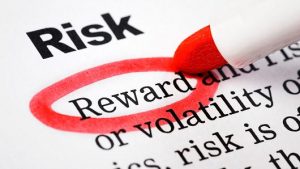 fits all type of thing, so let’s take a look at some of the event risks that traders should think about when trading value stocks in commodity ETFs or ETNs.
fits all type of thing, so let’s take a look at some of the event risks that traders should think about when trading value stocks in commodity ETFs or ETNs.
Event Risk #1: Weather
As mentioned earlier, commodity prices are driven by supply and demand forces. Of course, weather can play a major role. For example, floods in India could affect cotton supply (one of the world’s largest producers) and cause prices to shoot up. Bad weather has the potential to cause supply disruptions. In 2005, Hurricane Katrina caused damage to U.S. oil refineries in the Gulf of Mexico…causing crude oil prices to skyrocket.
Event Risk #2: Economics & Policy with Value Stocks
During periods of fear…investors will get out of risky assets, like stocks, and flock towards “safe havens” like bonds and gold. In 2011, Gold hit a record high because of fears that the European debt crisis would create massive inflation. Gold is very unique in that is seen as a hedge against inflation as well as a safe haven. Silver on the other hand, does not have that distinction.
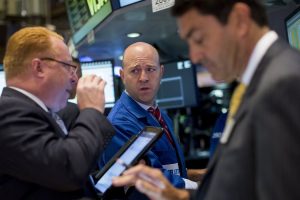 Always ask yourself what things mean in terms of supply and demand. For example, let’s say that China’s economy is showing signs of slowing down. What do you think that’s going to do the price of crude oil? This will most likey cause prices to shift sideways or down.
Always ask yourself what things mean in terms of supply and demand. For example, let’s say that China’s economy is showing signs of slowing down. What do you think that’s going to do the price of crude oil? This will most likey cause prices to shift sideways or down.
With that said, one of the key tools that central banks have is the ability to make changes to interest rates. Policy changes can affect commodities and stocks greatly if they’re not anticipated by the markets. Generally, central banks will try to prepare markets before they make significant changes to key interest rates in value stocks.
Event Risk #3: Geopolitical Risk
Commodities are natural resources…their prices are vulnerable to shocks…especially in countries in which they’re large suppliers or consumers of the product.
For example, back in March of 2104, Brent Crude oil prices spiked because of fear that Russia’s Vladimir Putin might cut gas flow. In May of 2014, Crude oil prices traded above $100 per barrel…due to concerns of tensions escalating in the Ukraine.
Summary
Now, if you’re trading value stocks that are highly correlated to commodities it’s important to be aware of the added volatility. For example, if the FOMC has a meeting announcement, it shouldn’t be a big surprise to see greater volatility in gold miners or gold ETFs. With that said, if there is uncertainty leading up to the event, it might make sense to lighten up your position or even hedge.
Stock Analysis And Event Risk In Equities
Imagine being long shares of a clothing retailer because you liked the short-term price pattern and felt that it was poised to break-out after some stock analysis. The following day one of its competitors had disappointing earnings and both stocks took a hit towards the downside.
Now, had you known how closely correlated both stocks were, and that one of them had earnings, you might have lightened up on your position or closed it out because you felt that earnings are a 50/50 coin toss.
In any event, a situation like this could have easily been avoided if you had just done your homework, i.e., better stock analysis. However, for the novice trader, these are scenarios that don’t even cross their mind. With that said, there are certain events that you need to be aware of before you decide to hold onto a position.
Let’s take a look at some of them.
Earnings
Many trading platforms today will have notifications on when earnings are. However, if yours doesn’t, it’s not the end of the world because that information is rather easy to find when doing stock analysis. For example, let’s say you took a long position in Gap Stores on November 5th and were considering holding it long for awhile. You could go to finviz.com and find their earnings information on their site.

(source: finviz.com)
As you can see, they have earnings on November 17. With that in mind, you’ll have to ask yourself if that can interfere with your thesis or not. In addition, you should also confirm by going to the company website and checking out their investor relations page.
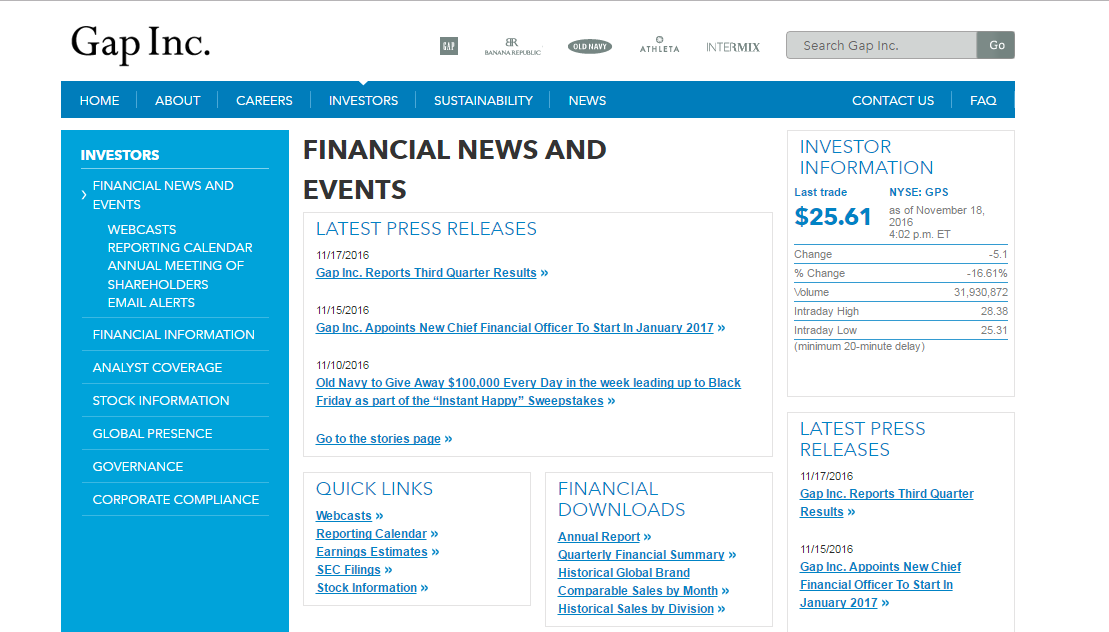
(source: www.gapinc.com)
Generally, the company website is the most reliable source for dates such as earnings when conducting stock analysis.
Competitor Earnings
In some niche industries, how a competitor does on earnings could be an indication on how others in the same space might perform. In this case, the clothing retailers industry is one of those niche industries.
What you’ll need to do is look up the dates of competitors to see if they have earnings around the period you intend on holding your position. You can find a list of similar companies on finviz.com. For example, The Gap, Inc. is categorized as an Apparel Store.

By clicking on the apparel store link, a list of apparel stores will come up.

(source: finviz.com)
You’d simply sift through the ones that are similar to see if any of them have earnings coming up.
Industry Reports
Sticking with our example, some clothing retailers will share numbers ahead of earnings, like holiday sales numbers or even give out forecasts. Now, if you’re trading energy related stocks, you’ll want to be aware of the EIA Petroleum Status Report which is generally on Wednesday.
Economic Reports
If you’re trading home builders you want to know when new home sales are released. If you’re trading banking or gold mining stocks, you want to be aware when the FOMC or other central banks have meetings lined up. A basic economic calendar can be used to find this information out. For example, econoday.com does a nice job of laying out this information.
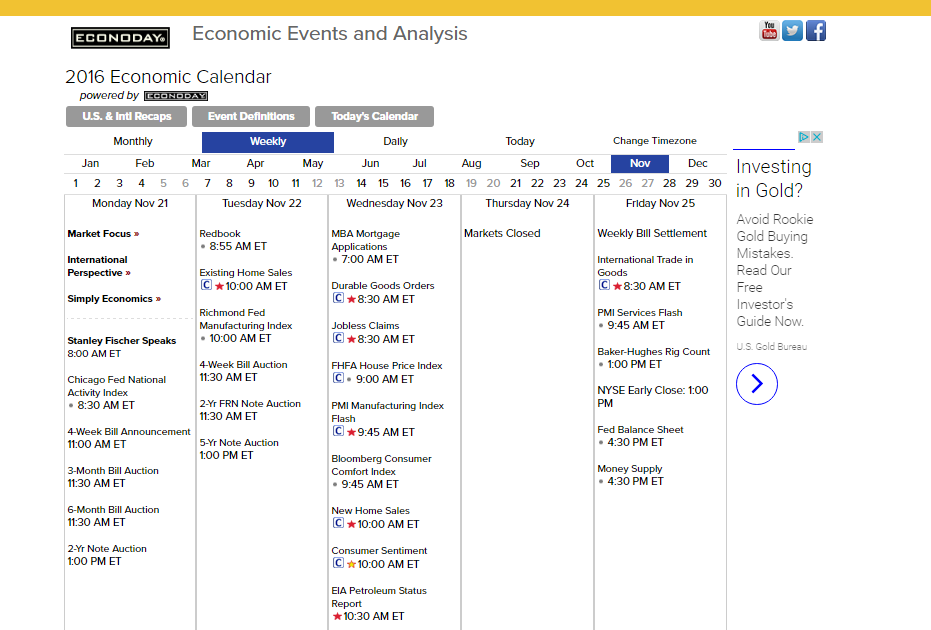
(source: www.econoday.com)
In summary, risk can be mitigated by simply making yourself aware of the events surrounding the stocks you’re trading. Of course, somethings we can’t predict, like when an analyst upgrades or downgrades a stock. But if it’s a known event, be ready and act accordingly after conducting stock analysis.
Top Penny Stocks Only Work If Traders Journal Their Trades
Now, there are just over 250 trading days in the year. Let’s say you’re an active trader and traded on average 3 top penny stocks per day. That adds up to 750 individual trades. Unless you have a photographic memory, you’ll probably only remember a handful of these trades, maybe your big winners or losers, or some interesting story that is tied into the trade. However, there is no way you’re going to remember all of them.
The time you spend in front of your screens can either be valuable or a waste, it’s really up to you. A valuable way to spend your time is by reviewing. It’s more or less  the same thing professional sports teams do when they study video footage of their opponents or previous game(s). They are examining to see if there is anything useful that they can find for their next encounter with the top penny stocks.
the same thing professional sports teams do when they study video footage of their opponents or previous game(s). They are examining to see if there is anything useful that they can find for their next encounter with the top penny stocks.
You can do the same thing by keeping a journal. Now, you don’t have to actually sit down and write in a notebook, if writing on your computer is easier, that works as well. The key is start recording information about your trades, thought process and tendencies.
If you’re unsure about what to journal here is some help:
Trade information: the time when the trades were made, whether you bought or sold, number of shares, holding period, and profit/loss.
Trade Thesis: In this section you would write about why you got into the trade and explain your edge in the trade.
For example, let’s say the stock price of a company was up 10% on a rumor that it might seek to put the company for sale. However, an hour later a company spokesperson comes out and denies the rumor. Some traders might start shorting  the stock off that headline. Their thesis is that the stock price rose on a belief that turned out to be false and because of that the stock should sell off.
the stock off that headline. Their thesis is that the stock price rose on a belief that turned out to be false and because of that the stock should sell off.
Well Being: In this part you want to write down about how you felt going into the trading day. For example, did you feel tired/refreshed, were you distracted/focused, did you start your day early/late/on time. Those are just some things worth considering. Some traders trade very poorly if they are hungover, while others don’t trade well without their coffee and breakfast. Find out what works for you and what doesn’t, and focus on winning with the top penny stocks.
Execution: Before every trade you should have your risk/reward mapped out. For example, I’m going to get in at this price and out here if i am wrong.
Once you know what your execution strategy is, then compare it to how you actually traded your plan. For example, let’s say you wanted to exit your long if the stock price dropped to $10, but for whatever reason you got out at $10.05.
Why?
It’s worth trying to answer why you were able or unable to follow through on the trading plan.
There is a lot more that you can include in your journal, these were just some ideas for you. The most important thing to do is journal, study and strive to improve trading the top penny stocks.
How Much Do Need To Get Started In The Stock Market?

Imagine you wanted to learn how to play the piano, and were in the market to purchase one. Now, if you’re not familiar with how much they cost, the range is anywhere between a couple thousand dollars to upwards of several hundreds of thousand dollars.
Do you think if you got a really expensive one, it would help you play better?
Heck no. Unless you’re rich, it makes zero sense to go out and fork over a lot of dough for something like this. The reason being, you are just starting out, you don’t even know if you’ll stick to it, and most likely you’re just playing for yourself, not like you need something fancy because you’ll be recording or performing for large audiences.
In business, they teach entrepreneurs to keep expenses lean and show proof of concept before expanding an operation. You don’t want to get involved with long-term leases or anything else that will put you under capital restraints. Again, you don’t know if the business will thrive, no reason to add pressure early on.
To most people, this makes a lot of sense. However, when you transfer this concept into penny stock trading, some don’t get it. You see, for whatever reason, some people think like you need to have a lot of money to get started in the stock market. That’s simply not true. And it is certainly not true when it comes to good stocks to invest in.
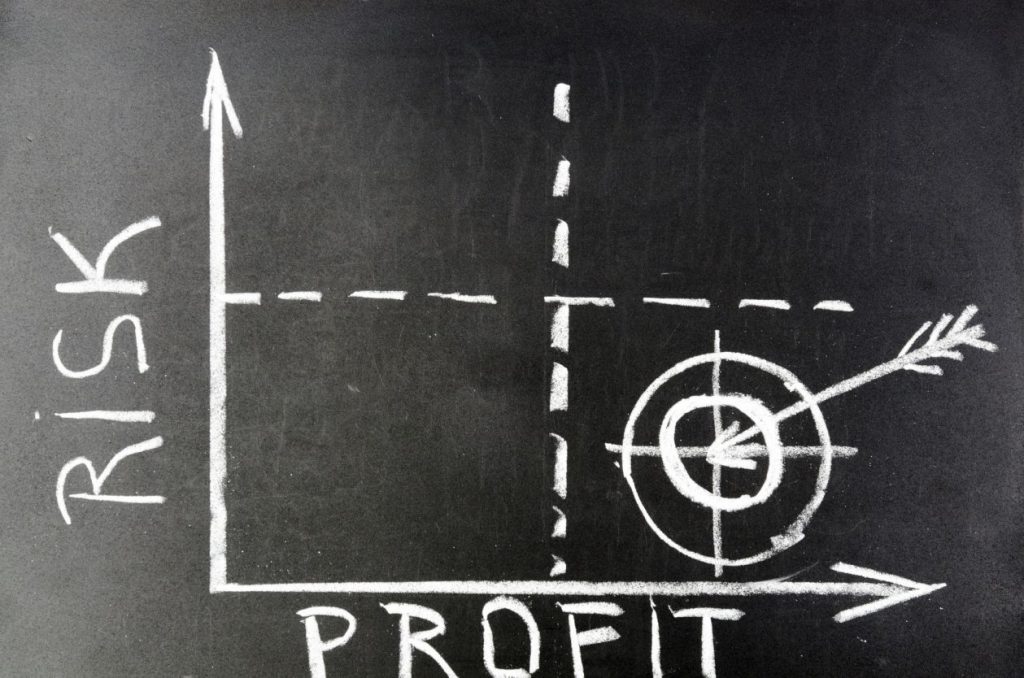
Going back to our previous examples, what is a lot of money going to do for you? In the beginning, you’re learning the fundamentals, discovering who you are as a trader, making mistakes, and hopefully learning from them. In other words, it’s a process… and having a lot of money doesn’t give you a pass or allow you to skip that. Why anyone would think this is the case with day trading stocks is somehow puzzling.
In fact, it actually makes more sense to start off small. Most likely, you will make more mistakes early in your trading career than later. Better to make small mistakes than expensive ones. For those saving, to get X amount to start trading… stop putting it off. Again, why wait? You might find out trading is not for you and realize that you just wasted time.
You must first learn the process of trading, finding penny stocks, and discover which strategies are suitable for your personality type. In addition, you must learn the skills of position sizing and risk management. For the most part, this will require you collecting data from your trades and analyzing that. That requires screen time, it doesn’t matter if you are risking $100 or $10,000 on a trade.
Ultimately, if you stick with it, learn and develop an edge… a time will come when you want to scale up your trading operation. Until then, start off small and begin the journey. Don’t focus on getting rich…focus on learning the process first. And don’t limit yourself to otc stocks, explore large cap stocks, too.
Imagine, leaving your day job to play the piano for a world-class orchestra without having any experience. Sounds silly right? Well, take that concept and apply it to trading. There is a learning curve involved in trading, the idea that you can leave your job to trade is really unrealistic. Well, initially it is. If you get to a point where you develop a strategy that has edge, and you’ve built up a solid track record…then yes, it’s possible to trade full time. However, you just need to get your feet wet in the beginning. That’s why you shouldn’t overly concern yourself with how much money do you need to get started — that’s the key to excelling at penny stock trading.
